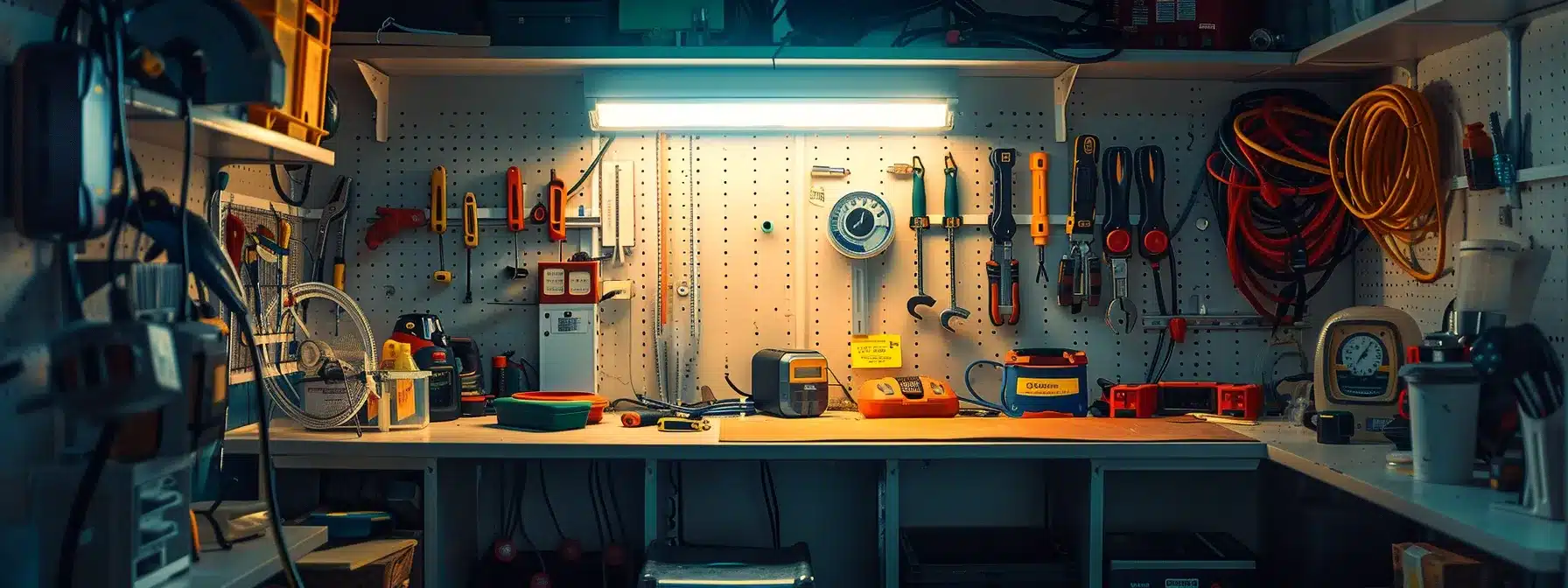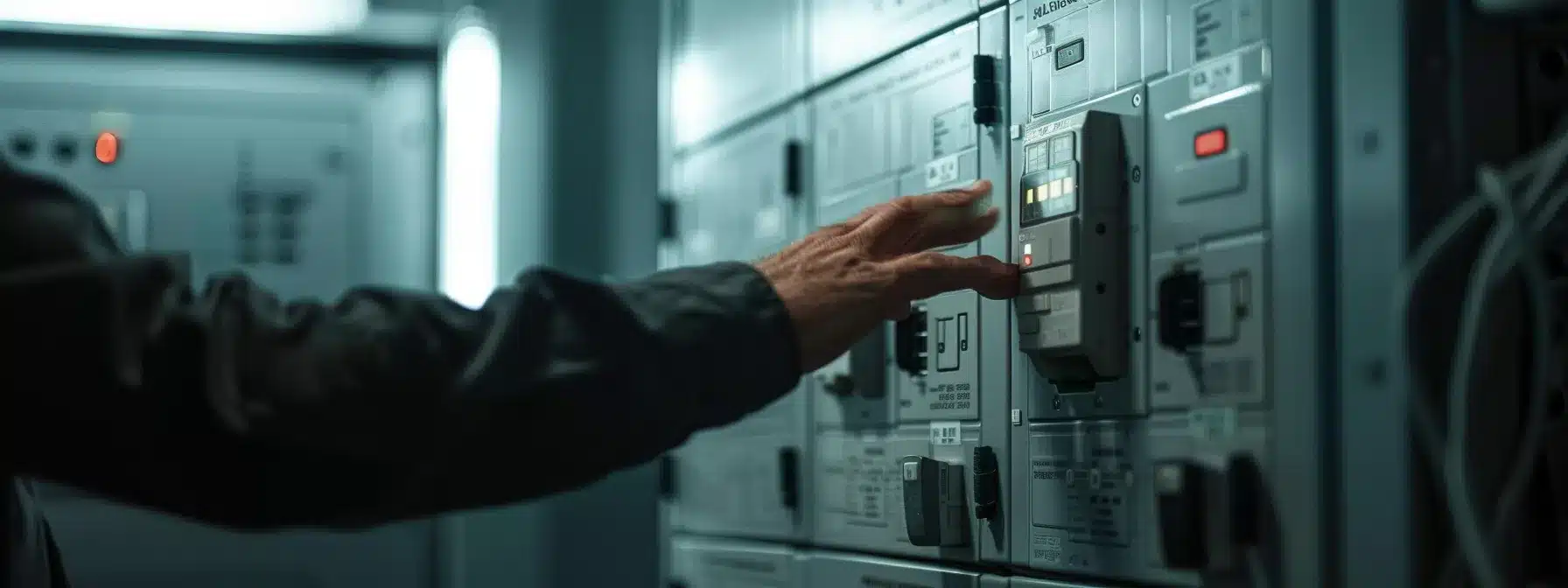How to Reset a Tripped Circuit Breaker Safely
Is a tripped circuit breaker leaving you in the dark? Knowing how to reset a tripped circuit breaker safely can save you time and frustration. This guide will outline essential safety measures and provide step-by-step instructions for resetting your circuit breaker. Readers will learn how to prevent future trips and understand when to call in a professional for help. Tackling this common issue not only restores power but also ensures your home remains safe.
What You Need to Know Before Resetting a Tripped Circuit Breaker

Before resetting a tripped circuit breaker, it is essential to identify common causes, such as overloaded power strips or faulty electrical wiring. Recognizing signs of electrical issues, including flickering lights or unusual odors, can also enhance fire safety. Understanding these factors provides a solid foundation for addressing the problem effectively and ensuring safe operation.
Identify Common Causes of Circuit Breaker Trips
Common causes of circuit breaker trips include electrical faults, which can stem from overloaded power strips or malfunctioning appliances. For instance, if a surge protector does not function correctly, it may lead to an unexpected power load that triggers the breaker. Homeowners should also consider checking the basement or other areas where wiring may be exposed to moisture or damage, as these conditions can result in hazardous situations. Utilizing a flashlight to inspect these areas can help identify potential problems before attempting to reset the breaker.
Recognize Signs of Electrical Issues
Recognizing signs of electrical issues is crucial before attempting to reset a tripped circuit breaker. Common indicators include flickering lights, which may suggest an overloaded circuit, or a gfci tripped in areas like the bathroom, signaling a potential fault. Homeowners should also be alert to unusual odors or buzzing sounds, as these can point to serious problems within the electrical system, warranting immediate inspection before resetting the breaker.
Required Safety Measures

Wearing appropriate protective gear is essential when resetting circuit breakers to prevent hazards like arc flash. Ensuring a clear work area helps avoid accidents, and informing other household members increases safety awareness. These measures prepare individuals to address any issues, such as a GFCI outlet that keeps tripping after a reset, with greater confidence and security.
Wear Appropriate Protective Gear
Wearing appropriate protective gear is vital for anyone resetting a tripped circuit breaker, as it helps to mitigate the risk of hazards such as arc faults. A pair of insulated gloves can protect against electrical shock while handling components of a circuit, especially in cases involving significant electrical loads. For added safety, using goggles can shield the eyes from potential debris or sparks that may occur during the circuit breaker repair process.
Ensure Work Area Is Clear
Ensuring that the work area is clear when resetting a tripped circuit breaker is critical for safety. Clutter can increase the risk of accidents, particularly when working with metal tools or components that may inadvertently come into contact with live electrical parts. Maintaining a tidy environment not only enhances focus and efficiency but also minimizes hazards, allowing individuals to address electrical concerns with greater confidence and security.
Inform Other Household Members
Before resetting a tripped circuit breaker, it is important to inform all household members about the situation. Communication helps prevent accidents, as individuals may unknowingly attempt to use electrical appliances or devices connected to the affected circuit. Making everyone aware enhances safety and ensures that all are prepared for any disruptions in power while the issue is being addressed.
Tools Needed for Resetting Circuit Breakers

To safely reset a tripped circuit breaker, homeowners should gather essential tools and equipment. Having a flashlight is crucial for illuminating dark areas, particularly in basements or utility rooms where visibility may be limited. The upcoming sections will detail recommended tools for this process, ensuring a proper approach to resolving electrical issues effectively and safely.
Recommended Tools and Equipment
To ensure a safe reset of a tripped circuit breaker, homeowners should equip themselves with essential tools. A reliable flashlight is crucial for illuminating dim or hidden spaces, such as basements or utility areas, where clear visibility is often compromised. Additionally, having a voltage tester handy allows individuals to verify that the electrical circuit is de-energized before performing any work, significantly reducing the risk of electrical shock.
Importance of a Flashlight
A flashlight proves to be an essential tool when resetting a tripped circuit breaker, especially in poorly lit areas like basements or utility rooms. It provides visibility during inspection, allowing homeowners to safely navigate spaces while looking for signs of electrical problems. By using a flashlight, individuals can assess potential hazards effectively, ensuring a secure environment before resetting the breaker.
Step-by-Step Instructions for Resetting a Circuit Breaker

To reset a tripped circuit breaker safely, homeowners must follow a series of clear steps. First, locate the electric service panel and identify the tripped breaker, usually in the ‘off’ position. Next, turn off all appliances on the affected circuit to prevent overload. After resetting the breaker, it is important to turn the appliances back on one at a time. This approach ensures safety and helps manage electrical loads effectively.
Locate the Electric Service Panel
To reset a tripped circuit breaker, the first step is to locate the electric service panel, which is typically found in areas such as basements, garages, or utility rooms. This panel houses the breakers that control the electrical circuits in a home. Ensuring that the panel is easily accessible will facilitate the process, allowing homeowners to quickly identify the tripped breaker and proceed with the necessary steps to restore power safely.
Identify the Tripped Breaker
Identifying the tripped breaker is a crucial step in safely resetting a circuit breaker. Homeowners should inspect the electric service panel for a breaker that is in the ‘off’ position or appears to be misaligned compared to others. By visibly differentiating the tripped breaker, individuals can proceed confidently to restore power and address any underlying electrical issues.
Turn Off Appliances on the Affected Circuit
Before resetting a tripped circuit breaker, it is crucial to turn off all appliances on the affected circuit. This step prevents potential overload, ensuring that when power is restored, the system won’t be immediately overwhelmed. Homeowners may consider unplugging devices such as lamps, kitchen appliances, and electronics to facilitate a safe reset and avoid further electrical issues.
Reset the Tripped Circuit Breaker
To reset the tripped circuit breaker, start by firmly pushing the switch all the way to the ‘off’ position before flipping it back to the ‘on’ setting. This step ensures the breaker resets properly, restoring power to the affected circuit. Homeowners should observe for any signs of malfunction, such as flickering lights, indicating that further inspection may be necessary if the breaker trips again shortly after being reset.
Turn Appliances Back on Safely
Once the circuit breaker has been successfully reset, it is important to turn appliances back on safely to prevent overloading the circuit again. Homeowners should start by plugging in one device at a time, allowing the system to stabilize as each appliance is brought online. This cautious approach not only minimizes the risk of tripping the breaker again but also helps in identifying any problematic appliances that could be causing electrical issues, ensuring a more efficient and secure operation of the household electrical system.
Preventative Measures to Avoid Future Trips

Regular maintenance of electrical systems plays a key role in preventing tripped circuit breakers. Homeowners should familiarize themselves with load capacities to avoid overloading circuits. This section will explore practical steps for maintaining electrical systems and understanding load limits, ensuring a safer and more efficient electrical environment in homes and small businesses.
Regular Maintenance for Electrical Systems
Regular maintenance of electrical systems is essential to ensure their reliability and safety. Homeowners should periodically inspect outlets, cords, and wiring for signs of wear or damage, as well as ensure that circuit breakers are functioning correctly. Scheduling routine check-ups with a licensed electrician can help identify potential issues before they lead to tripped breakers or hazardous situations, promoting a safe home environment.
Understand Load Capacities
Understanding load capacities is essential for maintaining a safe electrical system. Homeowners should familiarize themselves with the maximum load recommendations for their circuits to prevent overloading. For instance, if a 15-amp circuit is overloaded with too many devices, it can lead to frequent tripped breakers, posing safety hazards. By being mindful of appliance loads and limiting the number of devices on a single circuit, individuals can effectively reduce the risk of tripping circuit breakers in their homes.
When to Seek Professional Help

Homeowners should recognize specific signs indicating that resetting the circuit breaker may not be safe. These signs include persistent breaker trips, unusual noises, or burning smells, all of which point to underlying electrical issues. Common problems, such as faulty wiring or overloaded circuits, often require professional expertise to resolve, emphasizing the importance of timely assistance for maintaining a safe electrical environment.
Signs You Should Not Reset the Breaker
If a circuit breaker continues to trip after being reset, or if it emits unusual noises such as buzzing or crackling, homeowners should avoid resetting it again. Additionally, any presence of burning smells or visible damage to outlets and wiring indicates serious electrical problems that necessitate professional evaluation. Addressing these signs promptly with the help of a licensed electrician helps ensure safety and prevents potential hazards in the electrical system.
Common Electrical Problems Requiring Expert Assistance
Homeowners should be aware of specific electrical problems that require expert assistance, as attempting to address these issues without professional help can lead to safety hazards. Issues such as persistent circuit breaker trips, unusual buzzing sounds from outlets, or burning smells signal underlying problems like faulty wiring or overloaded circuits. Engaging a licensed electrician ensures these concerns are properly diagnosed and resolved, maintaining a safe electrical environment in homes and small businesses.
Conclusion
Resetting a tripped circuit breaker safely is vital for maintaining a secure electrical environment in homes and small businesses. Identifying the root causes of breaker trips and adhering to safety measures, such as wearing protective gear and ensuring a clear work area, fosters confidence during the process. Understanding the importance of load capacities and recognizing signs of electrical issues can prevent future complications. By following these guidelines, homeowners enhance their knowledge and readiness to address electrical concerns effectively.

